Showing Spotlights 1793 - 1800 of 2780 in category All (newest first):
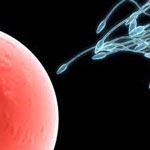 With fully conclusive findings about the toxicity of carbon nanotubes (CNTs) still up in the air, research on biomedical applications of CNTs is pushing full steam ahead. Adding to the list of potential concerns, a recent nanotoxicology study by a U.S.-Chinese research team looked into the impact of carbon nanotubes on male reproductive health. The translocation and biodistribution of nanoparticles are key factors in their toxicity evaluation in vivo. Although other nanoparticles such as gold and magnetic nanoparticles have been reported to enter testes in small quantities, it had not been established whether CNTs could enter or accumulate in the testis. This pilot study investigated the effects of intravenous injection of single and multiple doses of water-soluble multiwalled carbon nanotubes on the reproductive systems of male mice.
With fully conclusive findings about the toxicity of carbon nanotubes (CNTs) still up in the air, research on biomedical applications of CNTs is pushing full steam ahead. Adding to the list of potential concerns, a recent nanotoxicology study by a U.S.-Chinese research team looked into the impact of carbon nanotubes on male reproductive health. The translocation and biodistribution of nanoparticles are key factors in their toxicity evaluation in vivo. Although other nanoparticles such as gold and magnetic nanoparticles have been reported to enter testes in small quantities, it had not been established whether CNTs could enter or accumulate in the testis. This pilot study investigated the effects of intravenous injection of single and multiple doses of water-soluble multiwalled carbon nanotubes on the reproductive systems of male mice.
Aug 9th, 2010
 Bullet-proof vests are basically made from high stiffness and toughness, woven or laminated, polymeric fibers stacked in a number of layers. Upon impact of the striking bullet, the fabric material absorbs the energy by stretching of the fibers and the stiff fibers ensure that the load is dispersed over a large area throughout the material. Carbon nanotube is an ideal candidate material for bulletproof vests due to its unique combination of exceptionally high elastic modulus and high yield strain. If one compares these values with those for other fibers suitable for ballistic applications, the enormous potential of CNTs as a candidate material for bullet-proof armor system is quite evident.
Bullet-proof vests are basically made from high stiffness and toughness, woven or laminated, polymeric fibers stacked in a number of layers. Upon impact of the striking bullet, the fabric material absorbs the energy by stretching of the fibers and the stiff fibers ensure that the load is dispersed over a large area throughout the material. Carbon nanotube is an ideal candidate material for bulletproof vests due to its unique combination of exceptionally high elastic modulus and high yield strain. If one compares these values with those for other fibers suitable for ballistic applications, the enormous potential of CNTs as a candidate material for bullet-proof armor system is quite evident.
Aug 6th, 2010
 Solar cells that convert sunlight to electric power traditionally have been dominated by solid state junction devices, often made of silicon wafers. Thanks to nanotechnology, this silicon-based production technology has been challenged by the development of a new generation of solar cells based on thin film materials, nanocrystalline materials and conducting polymeric films. These offer the prospects of cheaper materials, higher efficiency and flexible features. Thanks to a highly efficient polymer solar cell fabrication method by a novel coating process - roller painting - even the mass production of polymer solar cells is now within reach. A particular advantage of roller painting compared to other coating processes is ease of control of the film thickness and uniformity.
Solar cells that convert sunlight to electric power traditionally have been dominated by solid state junction devices, often made of silicon wafers. Thanks to nanotechnology, this silicon-based production technology has been challenged by the development of a new generation of solar cells based on thin film materials, nanocrystalline materials and conducting polymeric films. These offer the prospects of cheaper materials, higher efficiency and flexible features. Thanks to a highly efficient polymer solar cell fabrication method by a novel coating process - roller painting - even the mass production of polymer solar cells is now within reach. A particular advantage of roller painting compared to other coating processes is ease of control of the film thickness and uniformity.
Aug 4th, 2010
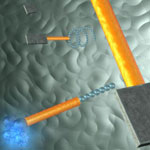 Sophisticated molecular-size motors have evolved in nature, where they are used in virtually every important biological process. Some fascinating examples in nature are DNA and RNA polymerase, rotary motors such as ATP synthase, and flagella motors. In contrast, the development of synthetic nanomotors that mimic the function of these amazing natural systems and could be used in man-made nanodevices is in its infancy. Nevertheless, scientists are making good progress in achieving cargo transport by artificial nanomachines although often these advances are handicapped by several drawbacks. Researchers in Germany have now demonstrated the directed loading and transport of microobjects by high propulsion powered tubular microbots driven by a microbubble propulsion mechanism.
Sophisticated molecular-size motors have evolved in nature, where they are used in virtually every important biological process. Some fascinating examples in nature are DNA and RNA polymerase, rotary motors such as ATP synthase, and flagella motors. In contrast, the development of synthetic nanomotors that mimic the function of these amazing natural systems and could be used in man-made nanodevices is in its infancy. Nevertheless, scientists are making good progress in achieving cargo transport by artificial nanomachines although often these advances are handicapped by several drawbacks. Researchers in Germany have now demonstrated the directed loading and transport of microobjects by high propulsion powered tubular microbots driven by a microbubble propulsion mechanism.
Aug 3rd, 2010
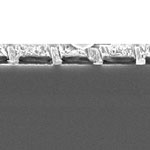 Quantum dots have been receiving extensive attention from researchers because they can be widely used for basic physics study, quantum computing, biological imaging, nanoelectronics, and photonics applications. Current major fabrication methods for semiconductor quantum dots all have certain drawbacks. Comparing all these methods, the electrical depletion method has many advantages, such as electrical tunability by gate contacts, smooth confinement boundaries, good control and uniformity if the top gate patterns are uniform enough. Researchers have now, for the first time, applied the electrical depletion method to quantum wells and generate a large area of uniform quantum dots using a uniform metallic nanoholes array on top of quantum wells. This design for forming quantum dots has inherited all the advantages of the electrical depletion method. Furthermore, it can produce millions of uniform quantum dots easily, precisely, and controllably, which will help realize the wide applications of quantum dots in many areas.
Quantum dots have been receiving extensive attention from researchers because they can be widely used for basic physics study, quantum computing, biological imaging, nanoelectronics, and photonics applications. Current major fabrication methods for semiconductor quantum dots all have certain drawbacks. Comparing all these methods, the electrical depletion method has many advantages, such as electrical tunability by gate contacts, smooth confinement boundaries, good control and uniformity if the top gate patterns are uniform enough. Researchers have now, for the first time, applied the electrical depletion method to quantum wells and generate a large area of uniform quantum dots using a uniform metallic nanoholes array on top of quantum wells. This design for forming quantum dots has inherited all the advantages of the electrical depletion method. Furthermore, it can produce millions of uniform quantum dots easily, precisely, and controllably, which will help realize the wide applications of quantum dots in many areas.
Jul 30th, 2010
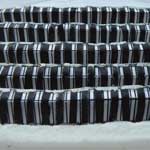 Previous studies have revealed that single-walled carbon nanotubes (SWCNTs) strongly absorb light, especially in the near-infrared region, and convert it into heat. There even has been a report that fluffy SWCNTs can burst into flames when exposed to a camera flash, which means the local temperature has reached 600-700C. This effect has already been used to develop effective CNT-based cancer killers or extremely dark materials. In a new twist, researchers in China have now discovered that SWCNT buckypapers have a large Seebeck coefficient, indicating a strong capability to convert heat into electricity. Based on this, they have designed an opto-electronic power source which converts the incident light into electricity. While this has been discussed as a theoretical mechanism, the team at Tsinghua University in Beijing has actually fabricated an integrated device that outputs a macroscopic voltage, moving forward towards practical applications.
Previous studies have revealed that single-walled carbon nanotubes (SWCNTs) strongly absorb light, especially in the near-infrared region, and convert it into heat. There even has been a report that fluffy SWCNTs can burst into flames when exposed to a camera flash, which means the local temperature has reached 600-700C. This effect has already been used to develop effective CNT-based cancer killers or extremely dark materials. In a new twist, researchers in China have now discovered that SWCNT buckypapers have a large Seebeck coefficient, indicating a strong capability to convert heat into electricity. Based on this, they have designed an opto-electronic power source which converts the incident light into electricity. While this has been discussed as a theoretical mechanism, the team at Tsinghua University in Beijing has actually fabricated an integrated device that outputs a macroscopic voltage, moving forward towards practical applications.
Jul 29th, 2010
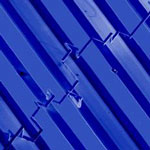 Imagine a device the size of - and nearly as cheap as - a grain of sand which is capable of analyzing the environment around it, recognize its chemical composition, and report it to a monitoring system. This is the concept of nanotechnology-based electronic noses (e-nose) - miniature electronic devices which mimic the olfactory systems of mammals and insects and which will lead to better, cheaper and smaller sensor devices. An international team of researchers has made a further step towards this vision and demonstrated a novel analytical sensor which mimics our olfaction system. The difference between this and similar prior e-noses is that the active element of this new device is an individual wedge-like nanowire (nanobelt) made of tin dioxide. The required diversity of the sensing elements is encoded in the nanobelt morphology via longitudinal width variations of the nanobelt realized during its growth and via functionalization of some of the segments with palladium catalyst.
Imagine a device the size of - and nearly as cheap as - a grain of sand which is capable of analyzing the environment around it, recognize its chemical composition, and report it to a monitoring system. This is the concept of nanotechnology-based electronic noses (e-nose) - miniature electronic devices which mimic the olfactory systems of mammals and insects and which will lead to better, cheaper and smaller sensor devices. An international team of researchers has made a further step towards this vision and demonstrated a novel analytical sensor which mimics our olfaction system. The difference between this and similar prior e-noses is that the active element of this new device is an individual wedge-like nanowire (nanobelt) made of tin dioxide. The required diversity of the sensing elements is encoded in the nanobelt morphology via longitudinal width variations of the nanobelt realized during its growth and via functionalization of some of the segments with palladium catalyst.
Jul 28th, 2010
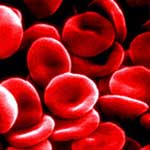 Numerous pathogens can cause bloodstream infections (sepsis) and the most straightforward cure is to remove the disease-causing factors from a patient's blood as quickly as possible. Several methods, like dialysis and plasma filtration/exchange, are already widely and routinely applied for this purpose. Demonstrating a novel use of nanomagnets, researchers in Switzerland have rapidly and selectively removed heavy metal ions, overdosed steroid drugs and proteins from human blood. This nanomagnet-based purification method avoids fouling of filter membranes and benefits from a high external surface area, and a correspondingly fast diffusion. Toxins or pathogens can be selectively removed from whole blood within minutes.
Numerous pathogens can cause bloodstream infections (sepsis) and the most straightforward cure is to remove the disease-causing factors from a patient's blood as quickly as possible. Several methods, like dialysis and plasma filtration/exchange, are already widely and routinely applied for this purpose. Demonstrating a novel use of nanomagnets, researchers in Switzerland have rapidly and selectively removed heavy metal ions, overdosed steroid drugs and proteins from human blood. This nanomagnet-based purification method avoids fouling of filter membranes and benefits from a high external surface area, and a correspondingly fast diffusion. Toxins or pathogens can be selectively removed from whole blood within minutes.
Jul 27th, 2010
 With fully conclusive findings about the toxicity of carbon nanotubes (CNTs) still up in the air, research on biomedical applications of CNTs is pushing full steam ahead. Adding to the list of potential concerns, a recent nanotoxicology study by a U.S.-Chinese research team looked into the impact of carbon nanotubes on male reproductive health. The translocation and biodistribution of nanoparticles are key factors in their toxicity evaluation in vivo. Although other nanoparticles such as gold and magnetic nanoparticles have been reported to enter testes in small quantities, it had not been established whether CNTs could enter or accumulate in the testis. This pilot study investigated the effects of intravenous injection of single and multiple doses of water-soluble multiwalled carbon nanotubes on the reproductive systems of male mice.
With fully conclusive findings about the toxicity of carbon nanotubes (CNTs) still up in the air, research on biomedical applications of CNTs is pushing full steam ahead. Adding to the list of potential concerns, a recent nanotoxicology study by a U.S.-Chinese research team looked into the impact of carbon nanotubes on male reproductive health. The translocation and biodistribution of nanoparticles are key factors in their toxicity evaluation in vivo. Although other nanoparticles such as gold and magnetic nanoparticles have been reported to enter testes in small quantities, it had not been established whether CNTs could enter or accumulate in the testis. This pilot study investigated the effects of intravenous injection of single and multiple doses of water-soluble multiwalled carbon nanotubes on the reproductive systems of male mice.
 Subscribe to our Nanotechnology Spotlight feed
Subscribe to our Nanotechnology Spotlight feed





